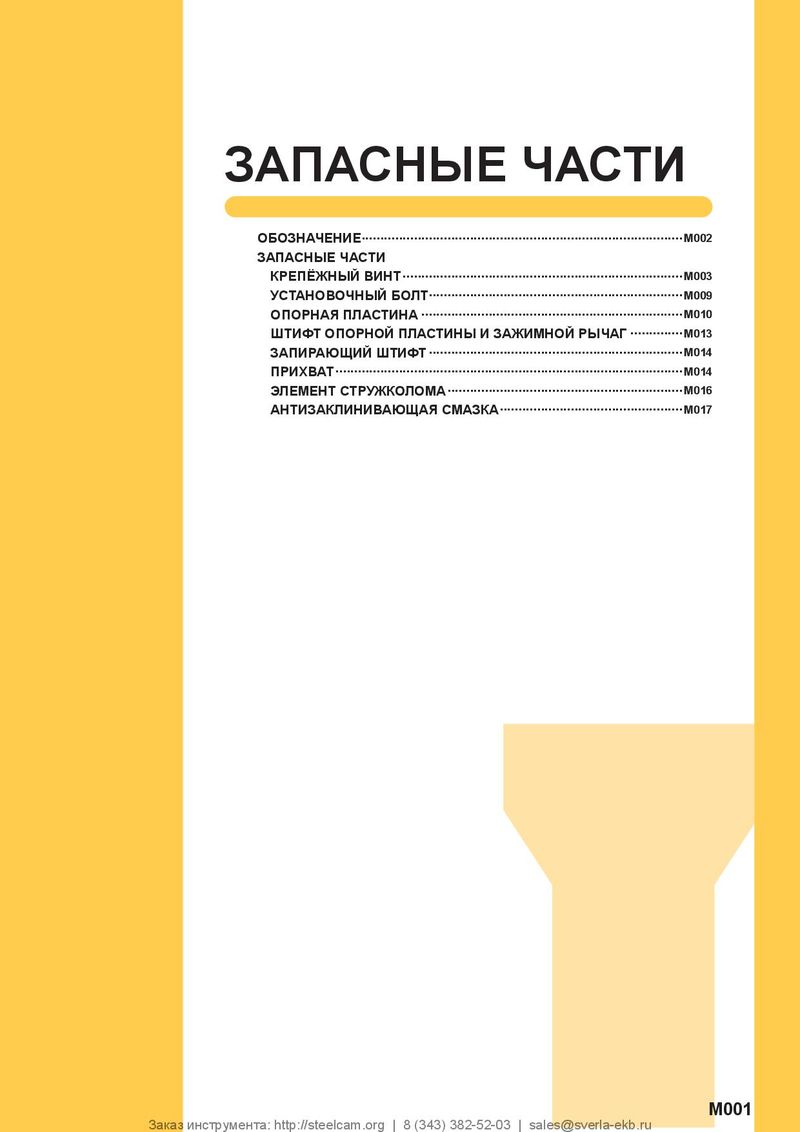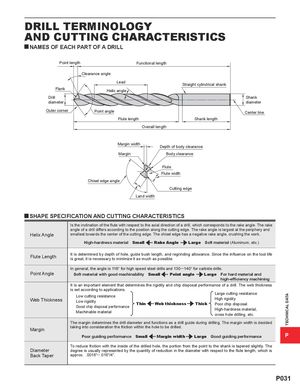Общий каталог Mitsubishi 2020 - 2021 - страница 1746
Навигация
 Каталог Mitsubishi Materials запасные части
Каталог Mitsubishi Materials запасные части Каталог Mitsubishi Materials резьбонарезной инструмент
Каталог Mitsubishi Materials резьбонарезной инструмент Каталог Mitsubishi Materials СНП с CBN и PCD для токарной обработки
Каталог Mitsubishi Materials СНП с CBN и PCD для токарной обработки Каталог Mitsubishi Materials сверлильные инструменты
Каталог Mitsubishi Materials сверлильные инструменты Каталог Mitsubishi Materials расточной инструмент
Каталог Mitsubishi Materials расточной инструмент Каталог Mitsubishi Materials пластины для точения
Каталог Mitsubishi Materials пластины для точения 
DRILL TERMINOLOGY AND CUTTING CHARACTERISTICS y NAMES OF EACH PART OF A DRILL Point length Functional length Clearance angle Lead Straight cylindrical shank Flank Helix angle Drill Shank diameter diameter Outer corner Point angle Center line Flute length Shank length Overall length Margin width Depth of body clearance Margin Body clearance Flute Flute width Chisel edge angle Cutting edge Land width y SHAPE SPECIFICATION AND CUTTING CHARACTERISTICS Is the inclination of the flute with respect to the axial direction of a drill, which corresponds to the rake angle. The rake angle of a drill differs according to the position along the cutting edge. The rake angle is largest at the periphery and Helix Angle smallest towards the center of the cutting edge. The chisel edge has a negative rake angle, crushing the work. High-hardness material Small Rake Angle Large Soft material (Aluminum, etc.) Flute Length It is determined by depth of hole, guide bush length, and regrinding allowance. Since the influence on the tool lifeis great, it is necessary to minimize it as much as possible. In general, the angle is 118° for high speed steel drills and 130 ─ 140° for carbide drills. Point Angle Soft material with good machinability Small Point angle Large For hard material and high-efficiency machining It is an important element that determines the rigidity and chip disposal performance of a drill. The web thickness is set according to applications. Web Thickness Low cutting resistanceLow rigidityGood chip disposal performanceThinMachinable materialWeb thicknessLarge cutting resistanceHigh rigidityThickPoor chip disposalHigh-hardness material,cross hole drilling, etc. The margin determines the drill diameter and functions as a drill guide during drilling. The margin width is decided Margin taking into consideration the friction within the hole to be drilled. Poor guiding performance Small Margin width Large Good guiding performance P To reduce friction with the inside of the drilled hole, the portion from the point to the shank is tapered slightly. The Diameter degree is usually represented by the quantity of reduction in the diameter with respect to the flute length, which is Back Taper approx. .0016"─ .016"/4". P031 TECHNICAL DATA